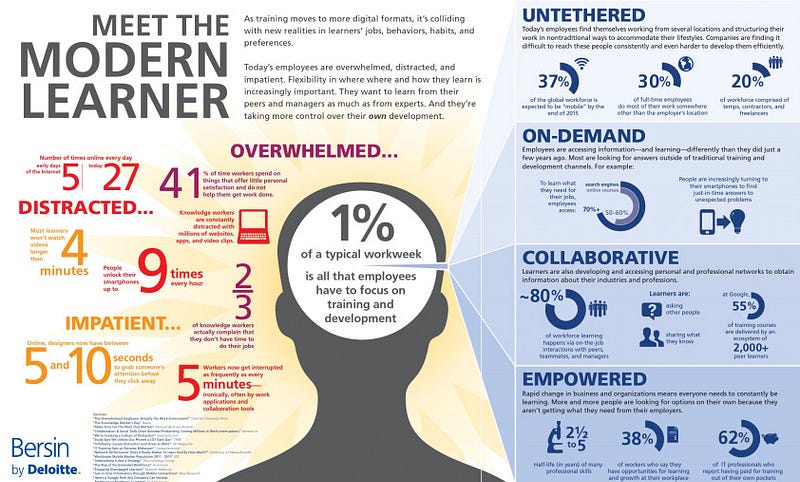The Future of Learning
A Survey of Dr Denise Meyerson's Books ( so far) by Lisa Harvey
At the end of last century (a phrase that renders me ancient) I was studying at university as an external student. I didn’t attend lectures on-campus and I submitted all my work online and participated in online learning. Back then it was cutting edge. I loved it, but participation was difficult, not entirely intuitive, awkward for everyone, and a bit less than engaging.
Digital disruption happens over time, despite sounding like a leap of a cliff. A trend evolves as innovators stand on the shoulders of the early adopters who have paved the way with blood and mistakes. Soon anything less is inadequate.
Training has moved on from the clunky, difficult systems we used back then.
In an information workshop about the future of learning and development Dr Denise Meyerson told us all “you can’t undo the internet, so use it.”
Learning and training is a growing, billion dollar business. It’s no longer the domain of schools, universities and accredited institutions. Anyone with a smartphone and a YouTube account can be a trainer in anything from pivot tables to patchwork.
Learning and development professionals now have a much more complex task of strategy and design. They become content curators and training innovators, incorporating diverse delivery channels and providing a much deeper and more effective experience for the learner, and a more strategic result for their organisations.
Dr Meyerson outlined three trends that are disrupting the learning and development domain.
TREND 1 “The Modern Learner”
Corporate learning was once about the content and the classroom. Participants turned up and learned by listening and doing assignments alone.
It is now all about the learner: what content they engage with, what channels they access with, how they behave and respond, their preferences, and how they engage.
Modern learners are connected, geographically dispersed, overwhelmed, impatient, and distracted. They want training content on-demand, any time, and anywhere. And if they don’t get that from their employer they will get it from the Internet.
Bersin by Deloitte have done research, a snip from the infographic is above.
TREND 2 “The Learning Eco-system”
The digital environment has created many more delivery options for training.
A training Eco-system will include:
- Face to face.
- Online learning.
- Webinars, and webinar recordings.
- Virtual classrooms.
- Micro bites – small snippets of training.
- Ongoing reinforcement through apps, SMS, and other channels to embed knowledge.
- Collaboration.
- Social media.
- Podcasts.
- Interactive exercises such as quizzes, checklists, games.
- Gamification (see below).
- Performance measurement.
The job of the learning designer is to use of all of these options to meet the needs of the modern learner, and to curate training and development that delivers better outcomes..
TREND 3 Gamification
Engaging people using the aesthetics and mechanics of games can ramp up the engagement of any training.
Games, challenges, competition and rewards get people participating at a much higher rate. It is an easy way to get people familiar with digital platforms. Learners love leaderboards, progress ladders, levelling up and avatars. Well designed gamification can keep them engaged throughout the learning process.
It’s big and getting bigger. Learners will start to expect it.
About Denise Meyerson
Dr Denise Meyerson is an expert in learning and development strategies. She is CEO of Management Consulting International which is a highly regarded learning and training company. I’ve done their courses and got to know them over many years. Denise is passionate about her field, and bases her work in science and she shares generously. Find her work here:
Lisa Harvey is an entrepreneur, speaker, futurist and writer. She wrote wrote Technology for Writers 2016.

No comments:
Post a Comment